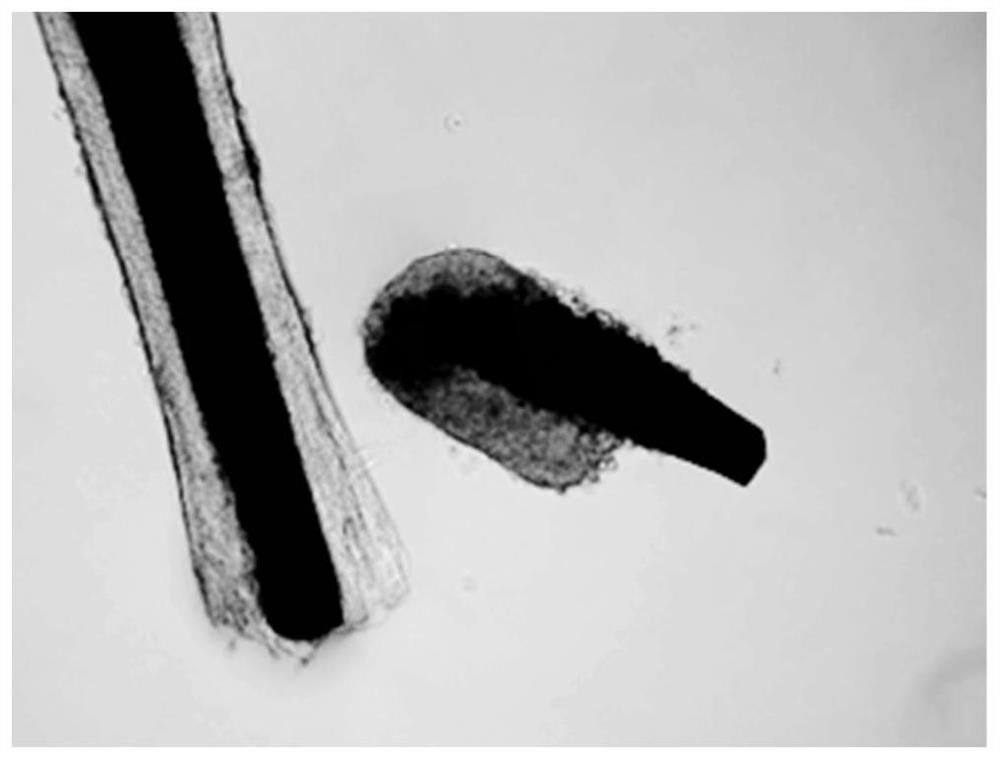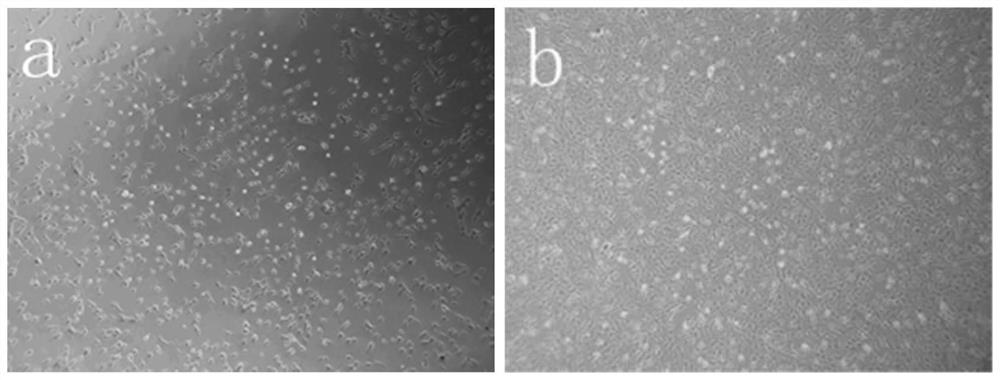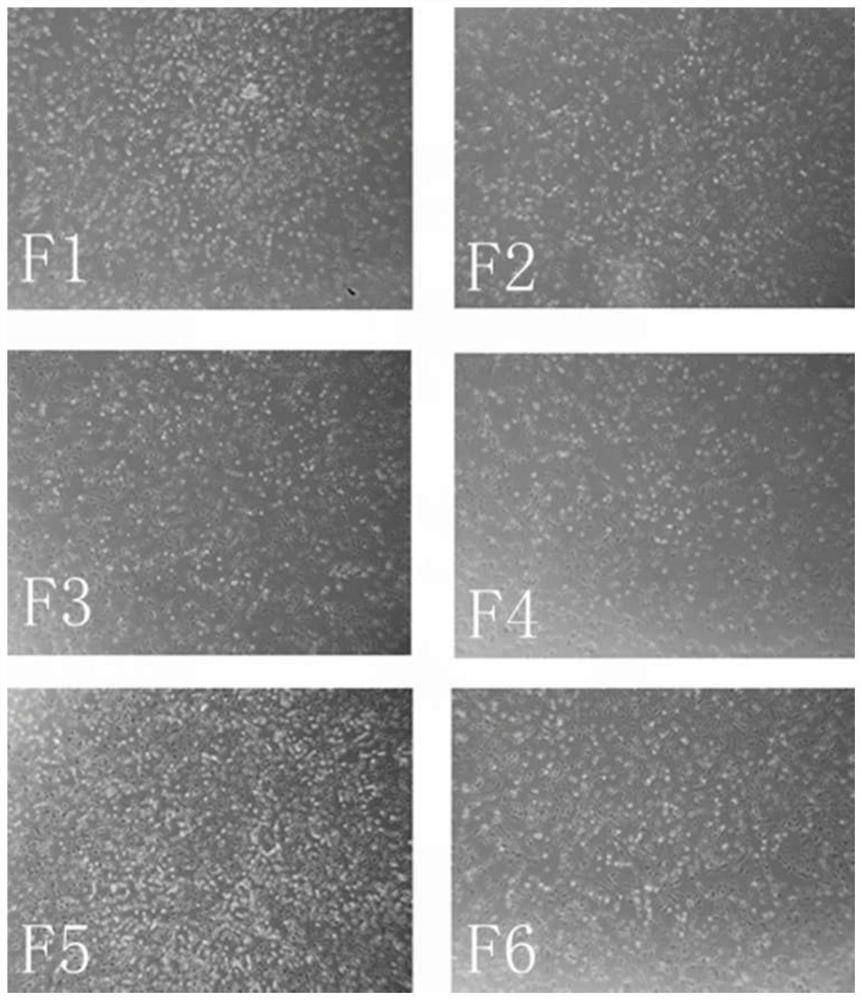Method for culturing pig hair papilla cells
A technology of papilla cells and culture methods, applied in cell dissociation methods, animal cells, culture processes, etc., can solve the problems of increasing the probability of bacterial contamination, difficulty in attaching dermal papilla cells, and difficulty in obtaining dermal papilla cells, etc., to achieve shortening The effect of cell passage time, shortening culture time, and improving adhesion efficiency
- Summary
- Abstract
- Description
- Claims
- Application Information
AI Technical Summary
Problems solved by technology
Method used
Image
Examples
Embodiment 1
[0034] Example 1: Screening of Pig Dermal Papilla Cell Digestion and Isolation System
[0035] 1.1 Screening of enzymes
[0036] The present invention adopts dispase II, type I collagenase and trypsin and certain time gradient to carry out pre-examination, and sample type and used enzyme are as shown in table 1:
[0037] Table 1 Methods of extracting dermal papilla cells from different species and comparison of their effects on pigs
[0038]
[0039] The present invention first uses dispase II to digest pig ear skin, but finds that the hair follicle structure is incomplete (such as figure 1 shown), dermal papilla cells could not be extracted. The present invention adopts type I collagenase gradient test, and finds that the digestion time of 4-5h has a good hair follicle stripping effect, but after only using collagenase to pick the pig hair papilla, it is found that it is difficult to remove the adhesion around the hair papilla, so the present invention adds Digestion wi...
Embodiment 2
[0051] Embodiment 2 adopts the pig dermal papilla cell subculture experiment of isolation culture of the inventive method
[0052] Cut the skin tissue from the thinner part of the pig’s ear within half an hour after slaughter, place it in a 50mL centrifuge tube without curling it, and immerse it in physiological saline, and complete the isolation and culture within 8 hours;
[0053] The method for culturing dermal papilla cells specifically includes the following steps: the pig dermal papilla cells are taken from the above-mentioned ear sample, specifically including the following steps:
[0054] S1. Take the ear sample out of the normal saline, cut the skin of the ear sample into 1.5cm*4cm long strips, wash it in normal saline, scrape off the surface dirt, and then wash it in iodophor solution for 2 minutes; then put it in Wash in normal saline, and then wash in 75% alcohol solution for 2 minutes; wash the ear samples in normal saline again, then wash in PBS (purchased from G...
PUM
 Login to View More
Login to View More Abstract
Description
Claims
Application Information
 Login to View More
Login to View More - R&D
- Intellectual Property
- Life Sciences
- Materials
- Tech Scout
- Unparalleled Data Quality
- Higher Quality Content
- 60% Fewer Hallucinations
Browse by: Latest US Patents, China's latest patents, Technical Efficacy Thesaurus, Application Domain, Technology Topic, Popular Technical Reports.
© 2025 PatSnap. All rights reserved.Legal|Privacy policy|Modern Slavery Act Transparency Statement|Sitemap|About US| Contact US: help@patsnap.com



